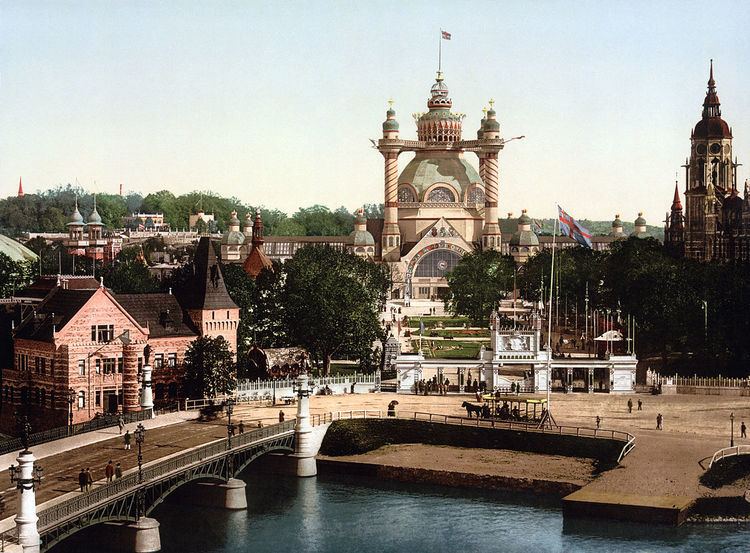 | ||
The General Art and Industrial Exposition of Stockholm of 1897 (Swedish: Allmänna konst- och industriutställningen) also known as Stockholm Exhibition or Stockholm World's Fair (Stockholmsutställningen) was a World's Fair staged in 1897 in Stockholm, Sweden.
The exhibition site was located on the island of Djurgården, and many of the structures on the western part of the island originated as part of the exhibition. These include Djurgårdsbron, the main bridge to the island, the Skansens Bergbana, the funicular railway now in the Skansen open-air museum and zoo, and the Nordic Museum. One of the most prominent buildings of the exposition, a 16,820 m² exposition hall in wood, designed by the architect Ferdinand Boberg and featuring a 100 metres tall cupola and 4 minarets, was demolished after the exposition however, together with many other pavilions built in non-permanent materials.
One theme of the exposition was the new media technologies of the day, including film and the phonograph. The opening ceremonies of the exposition were documented in early recordings, including the opening address by King Oscar II. These recordings have been preserved, and are now available on the internet.
